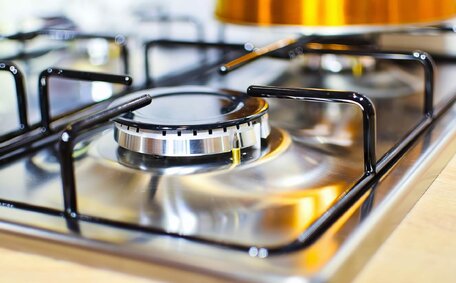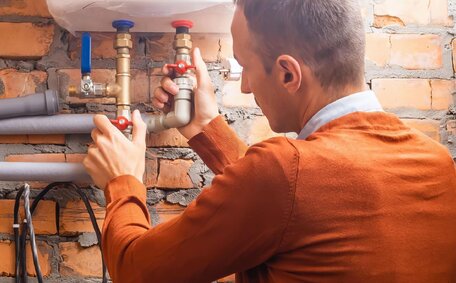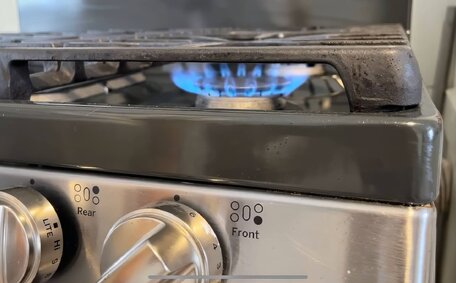When to Drain Your Hot Water System
Periodically draining your water heater is key to prolonging its service life. Though water heaters typically last between 10 to 12 years, annual flushing can extend this timeframe. Signs it may need draining include discoloured or sediment-filled water, strange noises, and loss of water pressure.
Yearly drainage of your water heater combats mineral buildup and sediment, maintaining its efficiency and preventing early system failure. Ensuring you’ve turned off your water heater, attaching a hose to the drain valve, opening taps for pressure relief, and beginning the system flush are key steps.
Beyond regular maintenance, drain your hot water system immediately if you encounter rumbling noises, unclear or odorous water, or diminished water pressure. This procedure eradicates sediment, enabling your heater to operate efficiently.
Safety Precautions When Draining a Hot Water System
Draining a hot water system poses risks, necessitating the heater shutdown and implementation of safety precautions. Initiate the process by switching off the heater at the circuit breaker and closing the cold water supply valve for gas units. In some cases, you may need to allocate substantial time for the water to cool completely.
Equip yourself with gloves, goggles, and additional protective gear before flushing water through the drain hoses. Make sure the area is well-ventilated when you’re set to turn off water to a gas system. Have a bucket ready to catch initial hot water release.
Once drained, you can turn the supply on to run clean water through and dislodge remaining sediments. Inspect fittings and valves for defects before refilling. Any problems, such as leaks, should be promptly addressed by Mascot Plumbing’s licensed plumber for your safety.
Expert plumbers like ours have extensive training in appropriate precautions when servicing hot water units. Our dedication to safety covers all advised precautions, ensuring your water tank and overall system are comprehensively protected.
Preparing to Drain the Hot Water System
Prior to draining your hot water system, gather essential items: a bucket for water, a hose to reach the drain valve, adjustable pliers or a wrench, and protective gloves and goggles.
Begin by flipping the breaker switch to the off position, readying the system for water drainage. Turn cold water off at the supply valve feeding the tank and close the gas valve if it’s a gas heater. Ensure access to the gas water heater’s drain valve at the base of the tank.
Position the bucket underneath and loosen the drain valve slowly to control the flow into the bucket, releasing pressure carefully. Once fully opened, secure the hose end to direct how flush your hot water from the tank outside or into the bucket. Open nearby hot water taps which can also allow air in so the tap water drains freely.
Locating the Drain Valve
The drain valve, compatible with your garden hose, is usually located at the tank’s base. This valve might resemble a standard hose bib, garden tap, or have a threaded spigot design. The valve allows you to connect a hose and release water from the tank for draining or flushing purposes.
Begin by removing any blocks around the tank’s base to facilitate easy access. It often has a regular garden hose fitting but may simply be an open spout.
Locate the valve, commonly made from brass or plastic. Initially test the valve your system gently in case sediment has clogged the pathway.
Attaching a hose before fully opening makes the drain tank process safer and easier. Have your bucket positioned underneath and slowly turn the valve counterclockwise to start water flowing out in a controlled manner. Opening it too rapidly may cause hot water to spray out at the start.
If you’re seeking assistance and pondering, 'How do I locate the drain valve on my hot water system?' then consult your owner’s manual. Alternatively, for assistance on how to drain your tank safely, contact our Mascot Plumbing experts.
Turning Off Water and Power Supplies
It’s vital to securely turn cold water supply off and disconnect power to your system before you commence draining, to avoid the risk of damage to your home or causing injury. Kick off by turning the circuit breaker off to disconnect your electric hot water heater if you have an electric model. For gas hot water heaters, turn gas control off by rotating the gas control valve to the 'pilot’ or 'off’ position.
Find the main cold water shut-off valve located at the bottom area of the tank and twist it clockwise to the 'closed’ position. This valve is usually located near where the water supply pipe makes its way into your abode. This action halts new water entry, which allows the tank to stabilise pressure, prepping it for the draining process.
You should also turn off any isolation valves that are specific to the hot water system. Wear gloves in case any residual hot water remains. Having disconnected all water and power sources, you then can attach a drain hose and proceed to safely empty the tank.
Mascot Plumbing’s licensed technicians strictly adhere to safety measures while flushing water from heaters during service checks. We’re fully versed in isolating water and energy sources to protect homes and prevent accidents.
Attaching a Hose and Opening Faucets
Once power and water supply are off, the subsequent action is to open up the valve spout, turning off drain and connecting a garden hose securely. Ensure it’s properly affixed to manage and close drain flow as required. Direct the hose end into a bucket or drain area outside.
Before opening the valve completely, gently turn it to begin the pressure relief valve process. This allows pressure to release gradually so hot water doesn’t spray out. Following the initial burst, fully open the valve to commence the heater drain.
At this critical point, it’s necessary to turn on water supply taps throughout the whole house as well. As the tank drains, opening a faucet lets air enter so water can flow out freely. Otherwise, a vacuum effect could stop drainage halfway.
Keep taps open during the drainage, and once water stops flowing from the hose, close the drain valve and proceed to the next step. Then rotate the hot water tap firmly to the shut off position and seal the drain valve. Your hot water system is now empty and ready for flushing clean water through.
Process for Draining the Hot Water Tank
Follow these key steps to drain your hot water tank:
- Shut off power so that your tank can be safely managed at the circuit breaker, while also turning off the gas supply valve if applicable.
- Close the cold water inlet valve feeding the heater.
- Firmly attach a garden hose to the drain valve spout, guiding it into a bucket or any other suitable drainage area when prepared to flush your hot water from the system.
- Open the valve slowly at first to gauge how flush out the pressure gradually.
- Once opened fully, also open the nearest hot water faucet to prevent vacuum lock.
- Allow the water to drain completely, indicative of a properly flushed hot water system, until the tank is empty.
- Detach the hose and close both faucets and valves used in process.
- Flush clean water through tank once drained.
- Inspect all valves and fittings before refilling system.
Allowing the Tank to Cool
It’s important to let the water in the tank cool completely before commencing the drainage process. Scalding hot water poses a serious risk of burns if released too soon. Allow the tank to rest for several hours after powering it off.
Test the water temperature by cautiously running a hot tap before placing your hands or a hose near the drain valve. The water should be cool to the touch to prevent injury from splashing during the drain. If the water remains warm, give it additional time to cool, or contact us for professional advice.
Note that even with power disconnected, residual heat can maintain the water at a high temperature for more than expected in some water heaters. Take all precautions even after shutting off electricity or gas. Only proceed with draining when the water has completely cooled to avoid mishaps.
Opening the Drain Valve
When you are ready to drain the hot water tank, the next step is carefully opening the drain valve. Start by ensuring that your hose is securely fastened to the valve spout, and that the end hose extends to an outdoor area or empty bucket.
Gently rotate the drain valve counterclockwise, starting with a slight turn. This allows built-up pressure to release gradually so hot water doesn’t spray out unexpectedly. Once the initial flow decreases to a trickle, fully open the valve, at which point you won’t want water rushing unmanaged.
Be cautious not to force the valve which could damage it and cause leaks, obstructing the water coming out when you go to refill the system. Turn it gently but firmly. If it is stuck, try pouring some penetrating oil around the valve threads and let it soak before trying again.
Let the tank drain entirely, keeping an eye on the flow, doing this at least once until the water ceases. Once fully emptied, you can close the drain valve and detach the hose. Your hot water system is now ready for the next step of running clean water through to flush it.
Flushing Out Sediment
Following the drainage and flushing of your hot water tank, ensure a thorough system cleanse by circulating water to eliminate any lingering sediment or minerals. A regular flush water heater routine optimises efficiency and lengthens the house plumbing system’s lifespan by ensuring the pipes stay clear of sediment buildup.
Reattach the hose to the drain valve, open the cold water supply to let in fresh water, and continue draining the hot tank contents. Activate the hot water tap slightly to let air escape, encouraging water to stream out unobstructed through the drain hose. Continue flushing until the water runs clear, showing no signs of build up or debris.
Turn on hot water taps during flushing to help eliminate stale or unpleasant odours that arise from sediment accumulation.Aim to flush annually or semi-annually along with draining for preventative maintenance. This practice ensures your hot water system continues to operate effectively for additional years.
Closing and Resetting the System
After performing a full drain and back flush of the hot water system, the concluding steps are to seal the tank and reinstate the water supply and power:
- Tighten the drain valve clockwise after detaching the hose.
- Turn the water supply back on and allow the tank to refill completely.
- Once full, turn back the power or gas control valve to its ON position.
- Open hot water taps to bleed trapped air until water runs smoothly.
- Check all valves and connections for any leaks once the system is re-pressurised.
Inspect all fittings thoroughly as the tank refills. Should anything go wrong, address any drips without delay by tightening connections or swapping out worn gaskets before power restoration. This ensures safe, leak-free operation.
By following the proper draining and flush process annually, you help minimise sediment buildup that shortens the lifespan of your hot water system.
Annual Water Heater Maintenance
Please note, performing annual maintenance on your water heater is crucial for ensuring its efficient operation and longevity. By meticulously caring for your tank regularly, hot water systems can outlast the expected 10-12 years, especially with consistent annual servicing to prolong their lifespan.
Mascot Plumbing’s annual tank flush helps prevent sediment buildup and corrosion. We drain the system completely, flush clean water through, then inspect valves and connections. Doing this keeps your hot water running optimally for years longer.
Signs your system needs servicing include rumbling noises, drops in water pressure, foul odours, and dirty water. Take a preventative approach by adding a yearly maintenance check to remove minerals before they cause damage. Keeping your water heater well-maintained saves money over unit replacement.
Benefits of Regular Draining and Flushing
Consistent draining and flushing of your hot water system confers a multitude of advantages:
- Removes mineral deposits and sediments, which can impair efficiency
- Prolongs your water heater’s life by averting early failures
- Saves on energy bills by maintaining optimal performance
- Prevents foul odours and dirty water quality from buildup
- Facilitates component inspection and early issue detection
- Flushes stale water, keeping supply fresh and clean
- Lowers risk of leaks or corrosion from sediment accumulation
By integrating annual maintenance into your routine to drain hot water systems, particularly for residents on the Gold Coast, you can enhance the efficiency and longevity of your water heater.
Such preventative upkeep can lead to a reduction in the necessity for costly repairs or replacements down the line. We recommend contacting Mascot Plumbing to carry out this beneficial maintenance.
Signs Your System Needs to be Drained
Several clear signs indicate when your hot water system requires draining. If you notice a rumbling or banging noise when the heater runs, this indicates sediment has built up over time. Dropping water pressure, even when taps are only partly turned on, also signals buildup inside the tank.
Discoloured water is another red flag, as sediment stirred up makes it appear dirty or brownish. A rotten egg smell indicates sulphur deposits from hard water. If your water is very hot initially then turns lukewarm, your heating elements may be clogged.
We suggest you swiftly get in touch with Mascot Plumbing if you identify any issues — it’s what you need do to secure immediate assistance. Our licenced technicians can thoroughly drain and flush your tankless water system to restore functionality. Catching issues early prevents more costly repairs down the road and extends the lifespan of your hot water unit.






